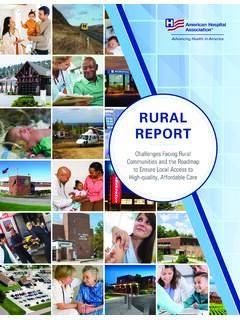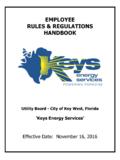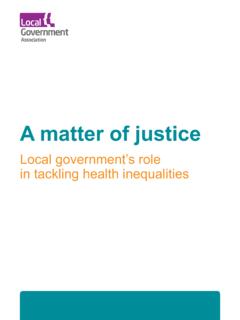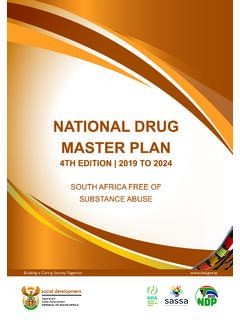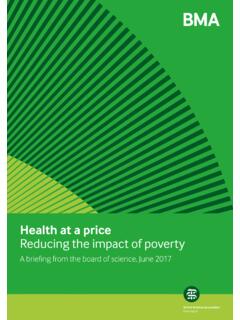Transcription of The Dangers and Consequences of Marijuana Abuse
1 Department of Justice Drug Enforcement Administration Demand Reduction Section May 2014 The Dangers and Consequences of Marijuana Abuse Table of Contents Introduction ..2 Is Marijuana Medicine? ..3 Dangers of Marijuana ..6 Marijuana is Dangerous to the User and Others .. 6 Mental Health Issues Related To Marijuana .. 8 Physical Health Issues Related to Marijuana .. 13 Environmental Issues Related to Marijuana .. 18 Marijuana as a Precursor to Abuse of Other Drugs .. 22 Dependency and Treatment ..23 Dangers to Non Users ..24 Delinquent Behaviors .. 24 Drugged Drivers .. 25 Other Consequences Of Marijuana Use ..29 Marijuana and Incarceration .. 33 Other Considerations ..34 Marijuana Use Among Youth Is Rising As Perception of Risk Decreases.
2 34 A FINAL NOTE ..36 Endnotes ..37 1 INTRODUCTION The Drug Enforcement Administration s (DEA) responsibility as it pertains to Marijuana is clearly delineated in federal law. But our responsibility to the public goes further to educate you about Marijuana with fact and scientific evidence. DEA supports research into the use of Marijuana as a medicine, to be approved through the Food and Drug Administration (FDA) process, the same as required of all other medicines in the We also want the public to understand the ramifications of the use of this drug and the Consequences it will have on our youth and our society as a whole. 2 IS Marijuana MEDICINE?
3 Scientists and researchers contend that the Marijuana plant contains several chemicals that may prove useful for treating a range of illnesses or symptoms, leading many people to argue that it should be made legally available for medical purposes. Marijuana is currently categorized as a Schedule I drug under the Controlled Substances Act (CSA), Title 21 801, et seq. This classification does not interfere with allowing research, and for those drugs formulated with the plant or its crude extracts from being reviewed and approved by the FDA. The fact is much research is being done. The National Institute on Drug Abuse (NIDA) and DEA have fostered research on Marijuana for many years. According to NIDA: Scientific study of the active chemicals in Marijuana , called cannabinoids, has led to the development of two FDA-approved medications already, and is leading to the development of new pharmaceuticals that harness the therapeutic benefits of cannabinoids while minimizing or eliminating the harmful side effects (including the high ) produced by eating or smoking the leaves.
4 Cannabinoids are a large family of chemicals related to delta-9-tetrahydrocannabinol (THC), Marijuana s main psychoactive (mind-altering) ingredient. In addition to THC, the Marijuana plant contains over 100 other cannabinoids. Currently two main cannabinoids of interest therapeutically are THC and cannabidiol (CBD), found in varying ratios within the Marijuana plant. THC stimulates appetite and reduces nausea (and there are already approved THC-based medications for these purposes), and it may also decrease pain, inflammation, and spasticity. CBD is a non-psychoactive cannabinoid that may also be useful in reducing pain and inflammation, controlling epileptic seizures, and possibly even treating psychosis and addictions. An FDA approved drug called Dronabinol (Marinol ) contains THC and is used to treat nausea caused by chemotherapy and wasting disease (extreme weight loss) caused by AIDS.
5 Another FDA-approved drug called Nabilone (Cesamet ) contains a synthetic cannabinoid similar to THC and is used for the same purposes. Both are available through a doctor s prescription and come in pill or capsule form. Sativex , an oromuscosal spray for treatment of spasticity due to multiple sclerosis, is already approved for use in other countries. Sativex contains equal parts THC and CBD. Sativex is now in Phase III clinical trials in the to establish its effectiveness and safety in treating cancer pain. Although it has not yet undergone clinical trials to establish its effectiveness and safety (necessary to obtain FDA approval), a CBD-based drug called Epidiolex has recently been created to treat certain forms of childhood epilepsy.
6 1 Although there have been many stories in the media about CBD and the benefits achieved by its use, all these stories are anecdotal. Dr. Elson So, President of the American Epilepsy Society asks 3 that the professional and lay community do not make treatment decisions that are not based on sound research. In his letter to the Miami Herald, Dr. So points out that there is currently a lack of scientific evidence for the use of Marijuana as treatment for epilepsy. It is not yet known if it is a safe and efficacious treatment. In addition, there is little known about the long term effects of using Marijuana on infants and children on memory, learning and behavior. The lack of information does not mean that it is an ineffective treatment but let s be sure that it is and learn how to use it correctly.
7 2 DEA has always supported ongoing research into potential medicinal uses of Marijuana s active ingredients. As of May 2014: There are 237 researchers registered with DEA to perform studies with Marijuana , Marijuana extracts, and non-tetrahydrocannabinol Marijuana derivatives that exists in the plant, such as cannabidiol and cannabinol. Studies include evaluation of Abuse potential, physical/psychological effects, adverse effects, therapeutic potential, and detection. Sixteen of these registered researchers are approved to conduct research with smoked Marijuana on human Organizers behind the medical Marijuana movement did not really concern themselves with Marijuana as a medicine they just saw it as a means to an end, which is the legalization of Marijuana for recreational purposes.
8 They did not deal with ensuring that the product meets the standards of modern medicine: quality, safety and efficacy. There is no standardized composition or dosage; no appropriate prescribing information; no quality control; no accountability for the product; no safety regulation: no way to measure its effectiveness (besides anecdotal stories); and no insurance coverage. DEA and the Federal Government are not alone in viewing how drugs should become medicines, the negative ramifications of the current processes engaged in by some of the states, and the harms that we are doing to our youth by continuing to allow and accept popular vote as a method of determining what medicine is. The American Medical association (AMA) in November 2013, amended their position on cannabis, stating that (1) cannabis is a dangerous drug and as such is a public health concern; (2) sale of cannabis should not be legalized; (3) public health based strategies, rather than incarceration should be utilized in the handling of individuals possessing cannabis for personal use; and (4) that additional research should be encouraged.
9 4 The American Society of Addiction Medicine s (ASAM) public policy statement on Medical Marijuana , clearly rejects smoking as a means of drug delivery. ASAM further recommends that all cannabis, cannabis-based products and cannabis delivery devices should be subject to the same standards applicable to all other prescription medication and medical devices, and should not be distributed or otherwise provided to patients .. without FDA approval. ASAM also discourages state interference in the federal medication approval process. 5 ASAM continues to support these policies, and has also 4 stated that they do not support proposals to legalize Marijuana anywhere in the United States.
10 6 The American Cancer Society (ACS) is supportive of more research into the benefits of cannabinoids. Better and more effective treatments are needed to overcome the side effects of cancer and its treatment. However, the ACS does not advocate the use of inhaled Marijuana or the legalization of Marijuana . 7 The American Glaucoma Society (AGS) has stated that although Marijuana can lower the intraocular pressure, the side effects and short duration of action, coupled with the lack of evidence that its use alters the course of glaucoma, preclude recommending this drug in any form for the treatment of glaucoma at the present time. 8 The Glaucoma Research Foundation (GRF) states that the high dose of Marijuana necessary to produce a clinically relevant effect on intraocular pressure in people with glaucoma in the short term requires constant inhalation, as much as every three hours.


